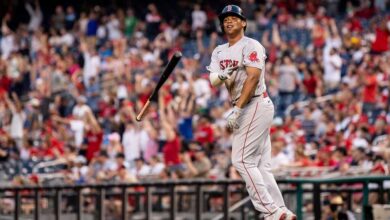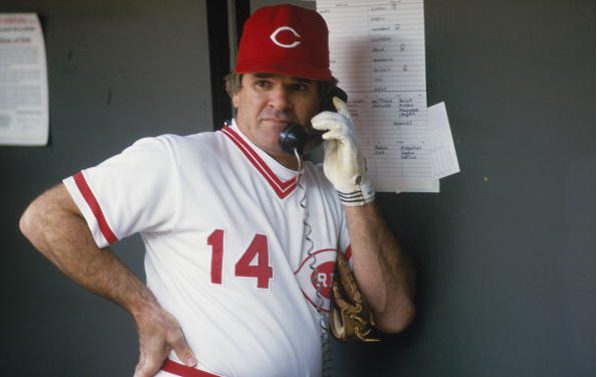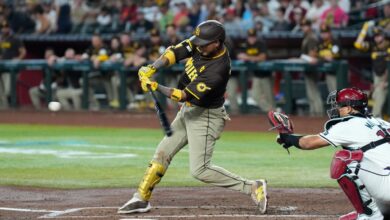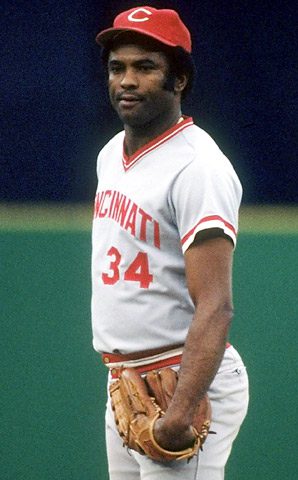
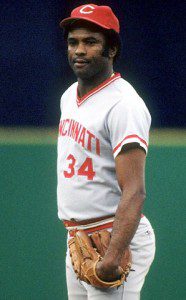
On Monday, June 4, baseball lost one of the most durable arms (not to mention, colorful characters) of the 1970s with the passing of Cincinnati Reds great reliever Pedro Borbon. Borbon, who succumbed to cancer at the age of 65, was a key part of a Big Red Machine bullpen that won back-to-back World Series championships in 1975 and 1976. His adopted home was Pharr, Texas.
Blessed with a rubber arm, Borbon appeared in more games than any other pitcher in the National League from 1970-78. He was a key part of a Reds bullpen that included “The Hawk” Clay Carroll and Rawly Eastwick. Lifetime, Borbon was 69-39 with 409 strikeouts, a 3.52 ERA and 80 saves. He appeared in three World Series for the Reds in 1972, 1975, and 1976.
He also finished in the top five in appearances in the senior circuit from 1972-1977. In addition, Borbon owns the Reds all-time franchise record for appearances with 531 games. He played 12 seasons in the majors with the Reds, Angels, Giants and Cardinals.
Pedro RodriguezBorbon was born in Mao, Veverde, in the Dominican Republic on December 2, 1946. He claimed that he knew nothing about baseball until he played a pick-up game when he was 16. Initially a catcher, after being whacked in the head with a bat, he decided to take to the mound and become a pitcher.
The St. Louis Cardinals signed Borbon as an amateur free agent on October 15, 1964, the same day as their game seven World Series-clinching win over the Yankees. Playing several seasons in the minors, Borbon pitched well in the Cardinals system, particularly Class A Modesto. His 1968 numbers (8-5, 2.34 ERA, 96 Ks in 100 innings) caught the attention of many major league organizations, and after the Cardinals failed to protect him, he was selected by the California Angels in the Rule 5 draft.
On April 9, 1969, Borbon picked up a win in his big-league debut versus the Seattle Pilots. During a rather unimpressive season with the Angels (2-3 with an ugly 6.15 ERA), Borbon was scouted by the Reds’ Ray Shore, who convinced Reds GM Bob Howsam to include him in a deal.
That deal happened 0n November 25, 1969. Borbon was traded by the Angels along with pitchers Vern Geishert and Jim McGlothin to the Cincinnati Reds for outfielder Alex Johnsonand infielder Chico Ruiz. The 23-year-old Dominican proved to be the most versatile. In 1971, Borbon put up impressive numbers in triple-A Indianapolis (12-6, 3.06 ERA in 56 games).
From 1972-1976, Borbon appeared in 20 postseason games for the Reds and posted a combined ERA of 2.42 (1.26 in NLCS games).
In 1972, his first full season with the Reds at the big-league level, Borbon helped his team win a National League pennant. The 1973 season was a personal best for his career, as Borbon made 80 appearances, pitched 121 innings, had a record of 11-4 with a 2.16 ERA and 14 saves.
Reds manager Sparky Anderson said of Borbon, “He can throw, throw, and throw … Even when I don’t plan to use him, he wants to throw in the bullpen.” He did in fact use him, however, and used him often. Borbon was usually a sure thing out of the pen for the skipper known as “Captain Hook,” as Sparky wouldn’t hesitate to remove any pitcher in any situation.
“And do you know,” once said Reds trainer Larry Starr, “I have yet to work on Borbon’s arm. About the only thing I’ve ever done for Pedro is put some warm stuff on his shoulder on a chilly night. Most of the time though, he doesn’t even want me to do that.”
Borbon not only displayed the power of his arm in his delivery to the mound, but also showed off his eccentric personality to his teammates. Such as in 1969, when as a rookie with the Angels, he threw a ball over the center field wall at Fenway Park from home plate. In 1972, he stood at second base and tried to throw the ball off the Astrodome roof in Houston.
Ever the character, Borbon claimed that his grandfather was 136 years old. He also once brought a pet rooster to the clubhouse, much to his teammates’ amusement, while playing winter ball in the Dominican League.
While he may have been a fun teammate, he was also known for his nasty temper. In 1971, while playing for the Reds triple-A affiliate, the Indianapolis Indians, he was fined a $100 and suspended three days for an “inappropriate hand gesture” directed at the crowd at Wichita.
Another legendary Borbon moment came on October 8, 1973, during the National League playoffs between the heavily favored Cincinnati Reds and the sleeper New York Mets. After a hard Pete Rose takeout slide of shortstop Bud Harrelson, a brawl started with both benches and bullpens emptying. While Harrelson and Rose were going at it, Borbon and Mets reliever Buzz Capra had their own war going on. During the fight, Borbon’s hat fell off, and after order was restored, he picked up one off the ground thinking it was his own. Upon hearing it was actually a Mets cap (In fact, it belonged to outfielder Cleon Jones), he took it off and tore it to shreds with his teeth.
His reputation for using his teeth in brawls was cemented during a bench-clearer between the Pirates and Reds in a July 14, 1974, doubleheader. What started when Reds pitcher pitcher Jack Billingham plunked Pirates hurler Bruce Kison, became complete chaos with punches thrown and landed. Bucs pitcher Daryl Patterson made the mistake of pushing Borbon aside, as Pedro pulled Patterson’s hair and dug into the back of his neck with, yes, his teeth. Following the altercation, Patterson had to get a tetanus shot.
The next time Borbon appeared out of the bullpen, Pirates radio broadcaster Bob Prince announced, “Dracula is on!”
“The public address announcer in Pittsburgh announced me as the Dominican Dracula,” Borbon said. “I didn’t like that much. I just got overexcited.”
His shenanigans continued as late as 1979, when Borbon was accused of fighting in a Cincinnati disco and “gnawing into his landlord’s furniture.”
In the 1975 World Series, Borbon appeared in three games versus the Red Sox, with a total three innings worked, three hits, two runs, two walks, a strikeout, and an ERA of 6.00. In the 1976 Fall Classic versus the Yankees, he appeared in just one game, pitching 1.2 innings and facing just five batters.
After pitching 10 seasons with Cincinnati, Borbon was traded. On June 28, 1979, Borbon was dealt to the San Francisco Giants for outfielder Hector Cruz. According to urban legend, Borbon was so incensed by the trade that he put he a voodoo hex on his former team, claiming the Reds would never win another World Series. Like other alleged “curses” (we’re stilling waiting on the Cubs, however) this proved to be false when they won it all again in a 1990. In 2002, Borbon publicly denied such a claim.
On April 3, 1980, he was released by Giants and signed with the Cardinals as a free agent at the end of the month. On May 27, he was released again, playing his final major league game on May 25.
Borbon became part of baseball lore in 1995 when, at the ripe old age of 48, he decided to return to the game as a replacement player. “I’m 48, but I feel like I’m 25. No sore leg, sore arm, nothing,” he said. Borbon struck out the only batter he faced. He also fell down fielding a bunt and threw wildly to first base. His comeback didn’t last long, as he was let go and the strike ended.
In 2010, along with Chris Sabo and Tony Mullane, Borbon was inducted into the Cincinnati Reds Hall of Fame, joining Clay Carroll (Class of 1980) and Wayne Granger (Class of 1982) as three relievers enshrined at Great American Ballpark.
Pedro also became a part of pop culture when his name was mentioned in a scene in the 1980 comedy classic, “Airplane.” While trying to concentrate and land a disaster stricken plane headed to Chicago, pilot Ted Striker hears a public address announcer say in his mind, “Pinch hitting for Pedro Borbon … Manny Mota … Mota.”
“He was always talking about that,” his son, Pedro Jr. said. In actuality, Borbon and Mota never played for the same team. “A lot of people remember him by that. He liked that.”
Pedro, Jr. himself pitched in the big leagues, appearing in nine seasons for the Braves, Blue Jays, Dodgers, Astros and Cardinals. In addition to his wife, Maria, Borbon had two daughters, Gabriela and Maria J. Borbon, two brothers, a sister and two grandsons.


